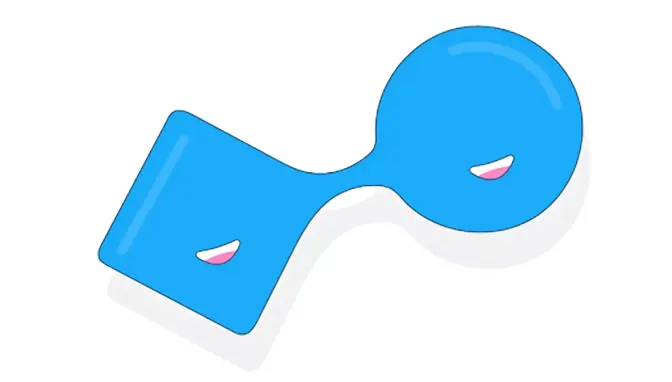Surviving a rebrand with digital asset management
It’s anticipated that M&A will see an uptick above 10B in the near term, meaning rebrands will also be on the rise. For companies that acquire, over 70% of them rebrand within 7 years.
M&A (mergers and acquisitions) often catalyze many additional changes for organizations including changes in staffing, resource allocation, and corporate structure. While these changes can be scary, for the brave they are also an opportunity to re-evaluate processes, workflows, and technologies. That’s why we’re going to dig into what M&A means for a company when it comes to evaluating internal marketing operations, workflows, people and technologies.
CMI lists M&A as one of four common triggers for getting DAM. The others being: rebranding, digital transformation, and leadership change.
After our acquisition of another market leader in the DAM space (Webdam), there was some uncertainty hanging in the air, with questions like:
- What did this mean for staffing?
- How would our business change, adapt and grow?
- How would the integration process unfold?
- What would we communicate to our customers and when?
- How would we take on the additional responsibilities that the M&A integration process requires?
- And, would we be successful in our integration process?
The answers to these questions became clearer once we started breaking down the integration activities that we would need to tackle. These may vary by type of merger or acquisition, but these are some of the high-level integration activities the Bynder marketing team tackled:
- Auditing content
- Rebranding content
- Updating internal swag, office interior design
- Refreshing content (copy and design updates)
- Merging websites
- Working with an entirely new group of stakeholders
- Merging processes and creative workflows
- Merging brand guidelines and digital asset libraries
- Updating branding on various websites across the internet
- Merging CRMs and marketing automation platforms
All of these activities were made easier by already having DAM in place, which is probably why we were able to accomplish so many of these tasks in under 8 months.
Every Byndie has a different take on how the M&A integration affected them and how DAM helped make the projects easier. Let’s dig into some of them.
M&A integration perspectives: Executive leadership
“Leveraging our own digital asset management solution allowed us to provide absolute clarity on direction. It lets your newly formed company/brand grow and thrive. The excitement and execution was a real special time in our journey.”
M&A integration perspectives: Branding and communications
“We had to be strategic in how best to communicate our new positioning and brand messaging in one unified voice for our customers, prospective customers and our board members. For our customers and prospective customers, we wanted to provide reassurance that they were still our main priority. We also wanted to communicate the added value we could provide by leveraging the best of both brands. And for our board, we wanted to show them what we were made of.”
“We used the Bynder DAM Homepage to communicate new branding and PR messaging to all of our various stakeholders.”
M&A integration perspectives: Content marketing
“One of the first things I did was ask for access to Webdam’s internal digital asset management platform. I was excited about auditing the new content library. Sure, it was a lot of work to audit, rebrand, update, and freshen up the content, but our library of content became richer and more diverse as a result.”

“I worked closely with Webdam’s lead designer in both Asana and the Bynder Workflow module on annotating, adjusting, and proofing the updates we did together. It was helpful because we could compare older versions next to new versions during the approval process to make sure all the suggested changes had been made. Then we simply pushed the final assets to the DAM when we were ready to share.”
M&A integration perspectives: Demand generation
“When you all of a sudden merge lead flows and pipeline, and are working with double the sales team you’re used to, you realize how much you need to have your sales enablement and content marketing game up to snuff. Within your own small team, you can take your eye off the ball because everyone sort of knows where to find everything. But then a whole new team joins from the acquisition...you need to provide those links, enable that proper sharing and make sure our prospects are getting 100% of our content, nothing less."
"There’s also a two-way learning that happens between demand generation teams. We had a few channels and a few content pieces that worked really well, and so did Webdam’s marketing team. So our first joint effort was a giant swap: re-brand the Webdam content to Bynder, and then put new content onto new channels that we knew worked for the other team.”
M&A integration perspectives: Online marketing
“We used Bynder’s DAM when tackling the project of merging Webdam’s website into a microsite on Bynder.com. A feat of no small merit, the online marketing team used the DAM as a single source of truth for digital assets. Bynder’s creative workflow feature made the approval process of re-designing and porting Webdam’s website assets over to the new microsite easier. Brand guidelines made sure that all assets, old and new, were on-brand and consistent.”
M&A integration perspectives: Product marketing
“We use the Bynder DAM to easily share sales enablement content with various stakeholders, as well as for workflow annotations and review rounds during the content creation process. Having the DAM in place at this critical time allowed us to easily get product-specific content to global sales teams.”
“One of the critical integration projects for us to take on was defining our product naming guidelines. A lot of people think brand guidelines just mean how to use the logo or what font to use, but documenting (and circulating) these types of guidelines directly through the DAM meant we could make real-time updates to the guidelines and people always know where to find the correct nomenclature for various product components.”
Conclusion
No two mergers or acquisitions are the same, but we understand the change your organization is going through or about to go through because we’ve been there ourselves.
We know how critical DAM can be during M&A triggered rebrands because we know the value it provides:
- Consolidate and centralize content across two newly merged organizations
- Easily conduct content audits
- Find content easily during a period of rapid change
- Increases communications for global teams
Sign up for a custom demo and consultation to see how Bynder can help you while your organization undergoes this dramatic shift! We’d love to talk shop about the M&A and rebranding experience with you.

















